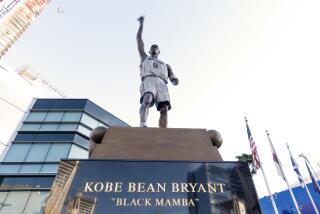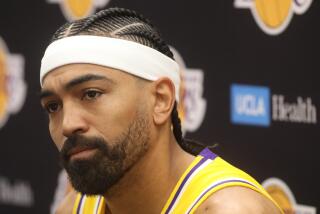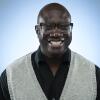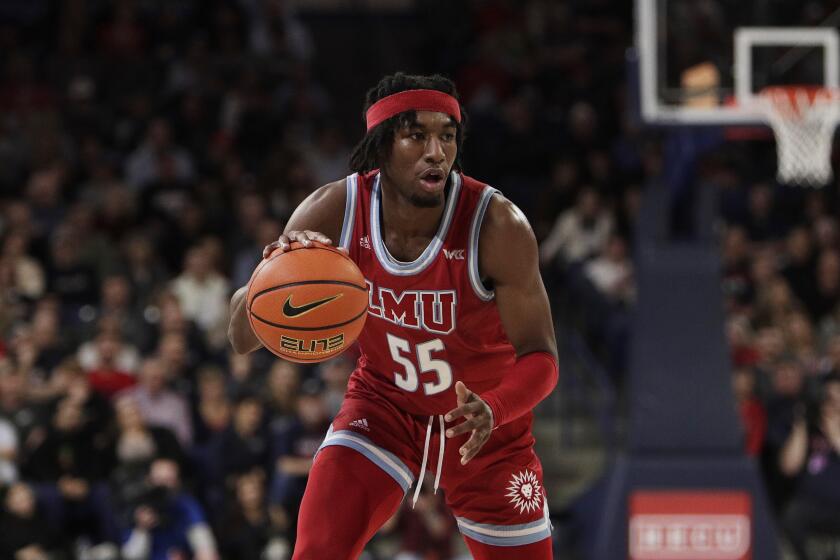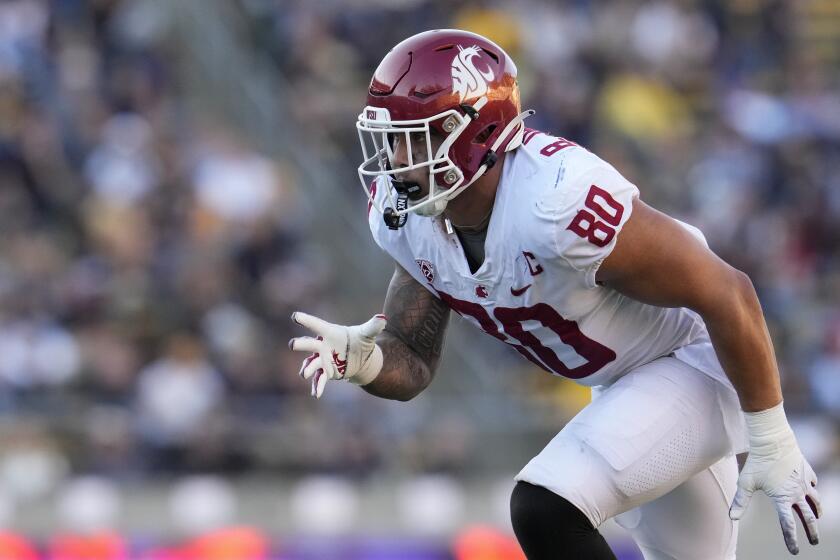Kobe Bryant undergoes a different kind of knee procedure
Lakers guard Kobe Bryant has taken an unusual step to try to strengthen his ailing right knee, undergoing an innovative procedure in Germany about a month ago, according to four people familiar with the situation who were not authorized to speak publicly.
The treatment is a derivation of platelet-rich plasma therapy. PRP procedures are less invasive than many surgeries involving the knee and are viewed as either an emerging solution to knee problems or a financial gamble on unproven science.
Bryant, who turns 33 next month, has been bothered in recent seasons by an arthritic joint in his right knee. He has undergone three other knee procedures since 2003, including surgery last July to remove unspecified loose bodies.
He sat out an overwhelming majority of the Lakers’ practices this past season and saw his scoring, shooting percentage and minutes decrease in his 15th NBA season. He has three years and $83.5 million left on his contract with the Lakers.
Bryant declined through a representative to comment for this story, but after the Lakers were eliminated by Dallas in the playoffs, he spoke of the need to “train and get strong” during the off-season.
“Last year I had [knee] surgery,” Bryant said in May. “The year before that, we played deep into June so I didn’t have a chance to grind like I would like to, but this summer I have that chance.”
Regarding his knee, he added that “there’s another level that I feel like I can get to.”
He did not specifically mention PRP.
The PRP procedure is fairly simple and takes about an hour.
A small amount of blood is drawn from the patient’s arm and spun in a centrifuge for about 20 minutes to isolate platelets. With guidance from ultrasound, the? platelets are then injected into the injured area to try to stimulate tissue repair.
But do PRP procedures really work? The consensus is that more long-term research needs to be done.
“Right now, the data is immature,” said Allan Mishra, an orthopedic surgeon who administers PRP treatments and is an adjunct professor of orthopedic surgery at Stanford University Medical Center. “There is a lot of cool stuff going on, but I temper that by saying we have a lot more work to do before it is definitive.”
The procedure isn’t close to mainstream but is becoming more common and might take another two to four years to fully validate, Mishra said.
“The interesting part is that it’s not super complicated,” he said. “It’s really only your own blood taken out of a vein and prepared right in front of you and then put back in an area of your condition. So the concept is to try and use within your own body to help heal yourself. This is an opportunity to really take advantage of the body’s own natural ability.”
In addition to Bryant, tennis star Rafael Nadal, golfer Tiger Woods and Pittsburgh Steelers receiver Hines Ward reportedly have undergone PRP treatments for their knees.
Other NBA players also experimented with PRP last season, including reserve Golden State guard Acie Law on his wrist and Portland guard Brandon Roy on his hamstring.
The World Anti-Doping Agency and U.S. Anti-Doping Agency debated in recent years whether PRP led to unfair athletic enhancement, but both entities determined last year it was fair for Olympic competition if it wasn’t mixed with human-growth hormone (HGH) or insulin-like growth factor 1 (IGF-1).
“What we’re hearing from our athletes is that it’s not demonstrated that it enhances performance at all,” said Travis Tygart, chief executive of USADA. “If you get PRP with HGH added to it, yeah, no question, but that is prohibited. As the [PRP] technique started gaining some traction over the last two or three years in athlete circles and among doctors that treat athletes, those doing it without HGH and IGF-1 weren’t seeing the same benefits. There wasn’t enough evidence that PRP by itself was proving enough enhancement to make it unfair.”
After the Lakers were eliminated in the playoffs, Bryant, who’d heard plenty about his supposedly declining skills, said there was something that would motivate him in the off-season.
“What I think about is shutting up those [people] saying that I’m done,” he said.
twitter.com/Mike_Bresnahan
twitter.com/BA_Turner
More to Read
Get our high school sports newsletter
Prep Rally is devoted to the SoCal high school sports experience, bringing you scores, stories and a behind-the-scenes look at what makes prep sports so popular.
You may occasionally receive promotional content from the Los Angeles Times.
